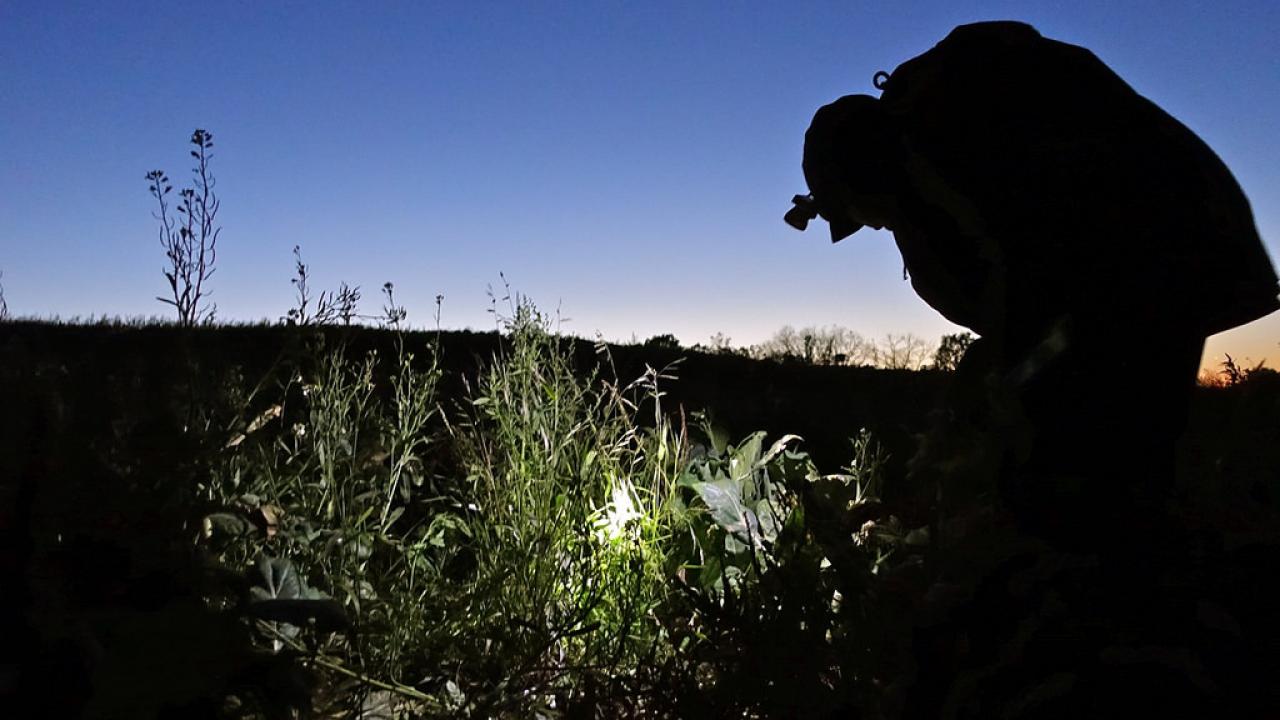
Night Work: A Growing Trend in Western Agriculture?
Farming doesn’t stop just because the sun sets. Across the West, a variety of crops are harvested at night, such as wine grapes, tomatoes, onions, garlic, and corn. Harvest, equipment transportation, set up, and maintenance as well as field prep and repairs, irrigation work, and pesticide application are other activities done at night.
Night Work is Increasing
The general, unofficial consensus among a number of professionals involved in agriculture is that night work is increasing. Possible reasons include rising temperatures and heat illness prevention regulations, increasing labor shortages, product quality and taste preferences, time-sensitive harvests, and avoidance of pests.
“The area’s cool nights create better working conditions—not only is the temperature more tolerable, but bees and rattlesnakes stay away at night” explains Lino Bozzano, VP of Vineyard Operation. Head Winemaker, Eric Hickey adds that “grapes are firmer, making them easier to work with.”
Currently, very little quantitative information is available on night work in agriculture, such as how many growers have adopted the practice, the kind of work being done at night versus the day, and how growers address nighttime health and safety risks.
Standard databases provide limited information. For example, the Bureau of Labor Statistics public records report the time of non-fatal injury by fixed time frames that cross day- and nighttime hours (e.g., 4 pm to 8 pm), making it difficult to determine how many accidents occur in the dark or how many accidents occurred from actual farm work versus transportation to and from the work site.
Health and Safety Implications
While more growers may be adopting nighttime work, there is concern that insufficient awareness of the hazards associated with night work puts agricultural workers at risk. Many safety risks of night work in agriculture are the same as the risks of daytime work, but they may be exacerbated by night conditions, such as limited visibility due to poor lighting or fatigue due to the disruption of biological rhythms leading to trips, falls, or collisions. Other risks include greater exposure to nocturnal animals and even criminal activity if lighting is poor.
In a 2010 article in Ergonomics, WCAHS investigator, Fadi Fathallah, PhD, cautions that night workers “undergo an inversion of this 'natural' [circadian rhythm] cycle by sleeping during daylight hours and working during night or dark hours. This disruption in the internal timing system and the physiological maladaptation to an inverted schedule can result in a variety of health and performance problems in workers, [such as] reduced quality of sleep, increased risk of cardiovascular disease, gastrointestinal disorders, reproductive dysfunction in women, and an increase in fatigue-related accidents.”
Night shift work has been shown in construction and hospital work to negatively affect health, including interruption of hormone release cycles, low immune response, cardiovascular disease, and miscarriage. The disruption of family life and social activities can lead to poor diet, stress, and lack of exercise. This is especially true if workers are picking up a second shift or working longer hours.
What is the Current Lighting Standard?
Current lighting standards require all tractors or ATVs used between an hour after sunset or an hour before sunrise to be equipped with at least one headlight that illuminates 50 feet. The current lighting standard does not address dark areas where workers may be doing non-machine work, the bathrooms, or parking adjacent to fields.
Whereas some farms go to great measures to light their fields and provide their employees with high visibility clothing, others rely on workers wearing headlamps or using car headlights to illuminate a field.
A proposed lighting standard to improve field lighting and worker visibility was drafted in 2014 for California agricultural field operations taking place between sunset and sunrise. The proposed standards would:
- Require employers to provide and require workers to wear high visibility garments, such as reflective vests
- Illuminate at a set light intensity on or near meeting areas, pathways, restrooms, drinking water, equipment maintenance, and work near stationary agriculture equipment or active harvest operations
The California Occupational Safety and Health Standards Board is working on finalizing a regulatory package. AgSafe President, CEO Amy Wolfe, in an interview with AgNetWest, said that, as of November 2018, the proposed standard was under fiscal review by the California Department of Finance with the potential for implementation by 2020.
Next Steps
WCAHS is working to define specific research questions that can shed light on this issue so that both growers and workers can safely benefit from the change in traditional work hours.
Answering the questions of how and why night work is increasing will likely have significance for labor, agriculture, and health policy. WCAHS encourages investigators to apply for small grant funding from our center to explore these issues more deeply.
